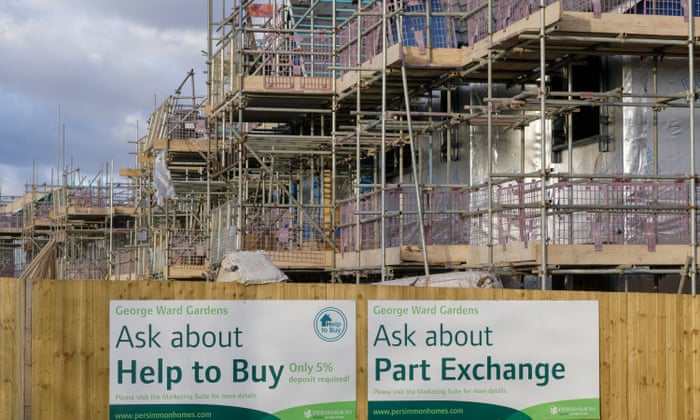Funding is to be made available to boost the number of affordable homes being built in the UK and a new green paper will be published to accelerate the planning process with builders encouraged to build a more diverse range of properties.
Chancellor of the Exchequer Philip Hammond did announce in his Spring Statement that £717 million from the £5.5 billion Housing Infrastructure Fund will be used to unlock up to 37,000 homes at sites including Old Oak Common in London, the Oxford-Cambridge Arc and in Cheshire.
He said that through the Affordable Homes Guarantee Scheme, the Government will guarantee up to £3 billion of borrowing by housing associations in England to support delivery of around 30,000 affordable homes.
He also said that new planning guidance will be announced to support a more diverse mix of housing on large plots in line with the conclusion of the Government commissioned Letwin review that greater differentiation of housing types and tenures will boost build out rates on such sites.
This will include introducing a package of reforms to allow greater change of use between premises, and a new fast track permitted development right to allow upwards extension of existing buildings to create new homes.
A new green paper setting out proposals on how greater capacity and capability, performance management and procedural improvements can accelerate the planning process.
Hammond also announced moves to promote greater sustainability in the built environment. These include a new Future Homes Standard requiring from 2025 that all new build homes will have to be fitted with low carbon heating and ‘world leading’ levels of energy efficiency.
The funding for affordable housing met with praise. ‘The £3 billion allocated to the Affordable Homes Guarantees Programme will enable Affordable Housing providers to boost their output by reducing their cost of borrowing,’ said Patrick Gower, residential research associate at Knight Frank.
‘The funding is welcome, because the government must look to a diverse range of housing providers if its ambitious target of 300,000 additional homes every year is to be met. This means looking not just to the volume housebuilders, who provide a significant amount of the country’s housing supply already, but also to Affordable Housing providers and developers of alternative tenures, such as Build to Rent, student housing and senior living,’ he added.
But builders are not keen on the biodiversity targets. Brian Berry, chief executive of the Federation of Master Builders (FMB) said that they appear to be burdensome and poorly thought out which can only result in more costs and more delays for builders.
‘Just as the environment for SME house builders starts to improve, these measures could end up stalling our progress. The Government wants to make developers, large and small, increase the biodiversity on their sites by a 110% and for an average site of 10 units, the additional cost could be in excess of £2,000.
‘Needless to say, this would also create delays to projects by adding additional hurdles for builders to negotiate during the already bureaucratic planning process. Rather than hampering the building of new homes, if the Government wants to be more green, it should focus instead on retrofitting the more than 24 million homes that have already been built and which account for around one fifth of the UK’s greenhouse gas emissions. This will not only help reduce the UK’s carbon footprint but will also tackle the scourge of fuel poverty,’ he added.
According to Matt Hare, associate planner partner at Carter Jonas, the Chancellor could support the delivery of new homes with other simple yet effective measures. ‘At present, the planning appeals process is often too slow, which is perceived to be, in many instances, due to a lack of resources within the Inspectorate,’ he said.
‘At the same time, the role of the Inspectorate is being expanded in some respects, adding more burden. Without a sufficient number of appeal inspectors of appropriate experience and qualification, the delivery of much needed housing is operating at a slower rate,’ he pointed out.
‘For all parties involved, including developers, councils and local communities, swifter resolution on appeals would help to alleviate uncertainty, which can only be a good thing. Carter Jonas would like to have seen further commitment from the Government to assist the Planning Inspectorate in recruiting and retaining appeal inspectors,’ he added.
Ian Fletcher, director of real estate policy at the British Property Federation, said that speeding up planning will require additional capacity and capability within local authority planning departments.
‘The development sector has tried to help meet this shortfall through higher planning application fees, which came into effect at the start of 2018, but it is also important that local government is properly funded and it desperately needs a more sustainable funding settlement as part of the forthcoming Spending Review,’ he explained.
Paul Hackett, chair of the G15 and chief executive of Optivo housing association, said that it was a missed opportunity in terms of longer term funding for affordable housing.
‘The new funding for the affordable homes guarantee programme is welcome, but our sector’s cross subsidy model of delivering affordable housing is broken and a new funding deal is imperative if the Government wants to hit its target of 300,000 new homes a year,’ he explained.
‘The Government must invest in this essential infrastructure to give the country the high quality, genuinely affordable homes it needs,’ he added.









